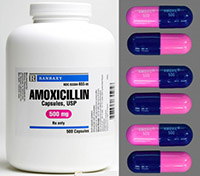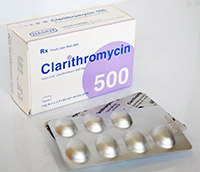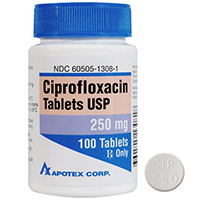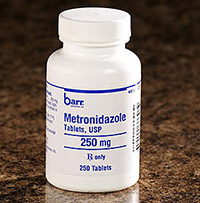The most important thing you should know about antibiotics!
Never expect a doctor to phone-in a prescription for an antibiotic without seeing you first. Why? To ensure your illness is in fact a bacterial infection, as viruses do not respond to antibiotics.
For example Influenza is a virus infection – this is why your doctor will never prescribe you antibiotics for this.
Knowing the difference between a viral and bacterial illness may save you time and money. Here are four tips to help you determine when an illness could be viral or bacterial. Take this advice only when you can’t see a doctor (when SHTF):
- Location: A viral illness typically causes wide-spread symptoms. A bacteria usually causes site-specific symptoms, such as those involving the sinuses, throat, or chest.
- Phlegm color: A virus may produce clear or cloudy mucous, if any. A bacterial illness typically causes colored phlegm (green, yellow, bloody or brown-tinged).
- Duration of illness: Most viral illnesses last 2 to 10 days. A bacterial illness commonly will last longer than 10 days.
- Fever. A viral infection may or may not cause a fever. A bacterial illness notoriously causes a fever (normal body temperature is 98.6, a fever is considered greater than 100 degrees Fahrenheit).
If you are diagnosed with a bacterial illness, typical antibiotic treatment is 10 to 14 days.
For more info click HERE
A person is no longer considered contagious once on an antibiotic for 24 hours and any fever has been resolved. (Source – Dr. Linda Petter)
If your symptoms do not resolve, or if at any time you develop a severe headache or neck pain, persistent nausea / vomiting or a fever, be sure to see a doctor promptly.
What Antibiotics to Stockpile
No antibiotic is effective against every type of microbe. Certain ones will kill aerobic bacteria, others are used for anaerobic bacteria, still others are effective against resistant strains, and certain people are allergic to or intolerant of various antibiotics.
Instead of buying 10 types of antibiotics (many having similar substances) you should consider 4-5 with totally different actions, so if the bacteria is resistant to one of them, you have 4 totally different “solutions” to try.
This, of course, only if you don’t have access to a clinic where they can test the bacterial resistance to these antibiotics first.
For example if you took Amoxicillin with no effect, there is no need to try other penicillin based antibiotics (Carbenicillin, Cloxacillin, Flucloxacillin, Oxacillin, Methicillin an so on) so you can exclude a wide range.
But the antibiotics listed bellow should work for most bacterial diseases, including Most Common Biological Weapons (like Anthrax – 90% mortality without treatment in the first 3-6 days).
The 4 Antibiotics You’ll Need

1. Amoxicillin
Amoxicillin is a penicillin antibiotic used to treat many different types of infection caused by bacteria, such as tonsillitis, bronchitis, pneumonia, gonorrhea, and infections of the ear, nose or throat.
Amoxicillin is also sometimes used together with another antibiotic called clarithromycin – the second one – to treat stomach ulcers caused by Helicobacter pylori infection.
Update – at the suggestion of Dr. M (comment area): Augmenting is also a very good option. It’s basically an upgraded amoxicillin (contains amoxicillin + clavulanate potassium) but with increased (mild) side-effects: stomach discomfort with mild cramping and diarrhea. I know it’s OK for most of people. I personally tried it 2 times and I had the bad luck of happening to me.
Related: Meds Stockpile For a Crisis
 2. Clarithromycin
2. Clarithromycin
Clarithromycin is a macrolide antibiotic. It fights bacteria in your body.
Clarithromycin is used to treat many different types of bacterial infections affecting the skin and respiratory system. If the bacteria seems to be resistant to Amoxicillin, this is the next best thing one should try when SHTF.
Contains Erythromycin and can be substituted with. Don’t take both antibiotics at the same time.
Update – at the suggestion of Dr. M (comment area): Zithromax (also a macrolide antibiotic) is a very good (better in many ways) substitute for Clarithromycin. But it is less active against Helicobacter pylori.
 3. Ciprofloxacin
3. Ciprofloxacin
Ciprofloxacin is an antibiotic in a group of drugs called fluoroquinolones.
Ciprofloxacin is useful for anthrax, urinary tract and prostate infections, diverticulitis and many forms of pneumonia and bronchitis.
Related: The Only Meds That You Need To Stockpile for SHTF
4. Metronidazole
 Metronidazole belongs to a class of antibiotics known as nitroimidazoles.
Metronidazole belongs to a class of antibiotics known as nitroimidazoles.
Metronidazole is used to treat parasitic and bacterial infections including Giardia infections of the small intestine, colon infections, liver abscess, vaginal infections (not yeast), fungating wounds, intra-abdominal infections, lung abscess and gingivitis.
How to store antibiotics?
Every antibiotic has its own particular decay rate, as proteins (oligopeptides) are subject to hydrolyzation, the main form of attack (heat and moisture are the enemy).
So, if you plan on long term storage, the individual foil packs are the best choice. Then pack them in sealed containers with dessicants to be sure.
For how long is it still safe to take antibiotics after the expiration date?
The American Medical Association (AMA) conducted a study and concluded that the actual shelf life of some products is longer than the labeled expiration date.
Manufacturers put expiration dates on for marketing, rather than scientific, reasons,” said Mr. Flaherty, a formal pharmacist at the FDA. “It’s not profitable for them to have products on a shelf for 10 years. They want turnover.”
With time, most antibiotics simply become less effective.
So maybe the question should be “for how long these antibiotics are expected to still have effects?”
Amoxicillin (tablets) – 5 years after the expiration date;
Clarithromycin and Doxycycline (tablets) – 5 years after the expiration date;
Ciprofloxacin (tablets) – 10 years after the expiration date;
Metronidazole (tablets) – 3 years after expiration date;
I hope you found this information useful. This is a guest post from Dr. S. Flint.
Alternative medicine with The Lost Book Of Remedies
Read also:
All the Edible and Medicinal Plants in North America (video)



What can substitute for cipro, for those who can’t take the fluorquinolones?